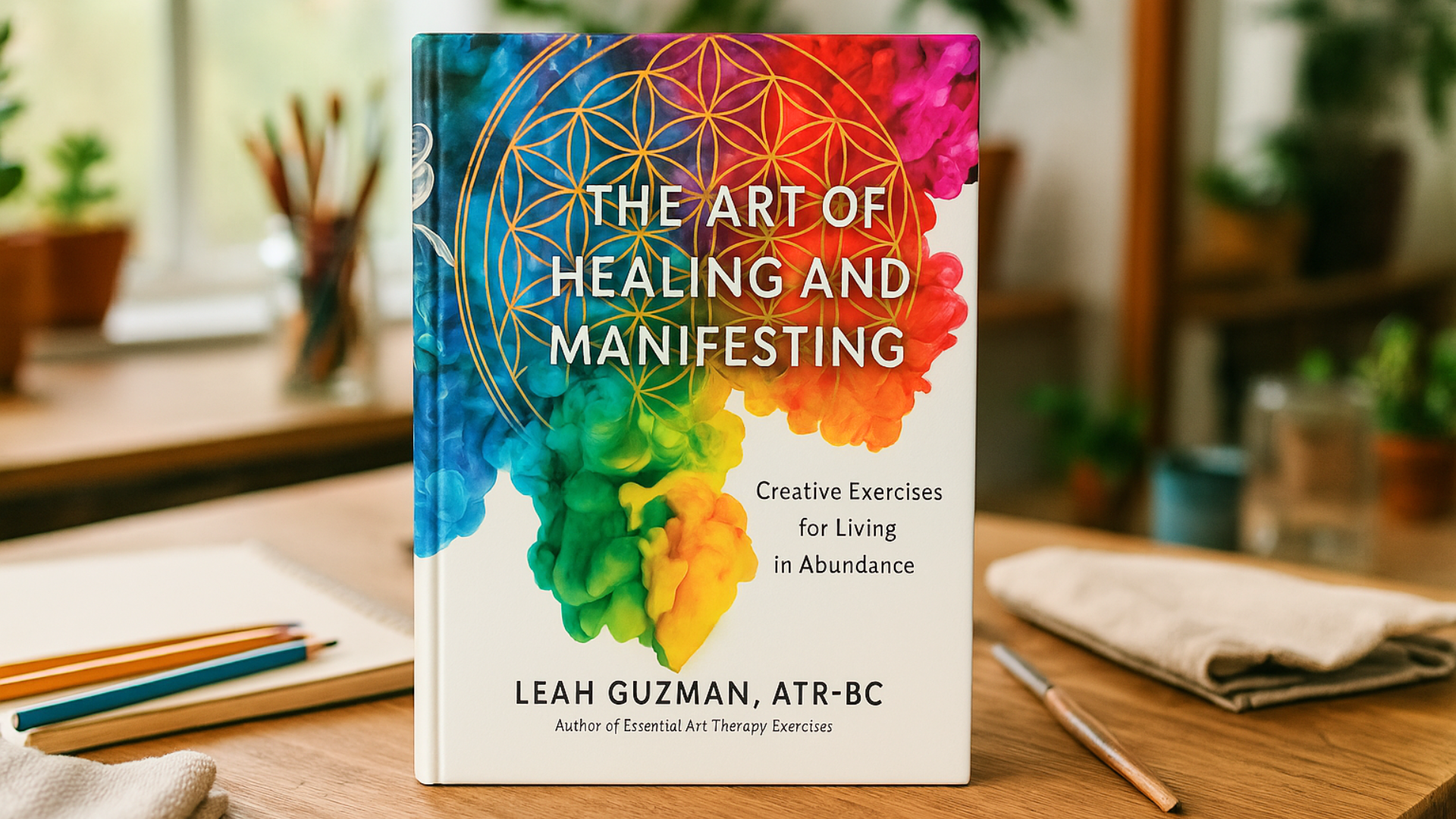A Creative Path to Intuition and Abundance

Book Review: The Art of Healing and Manifesting by Leah Guzman
A creative and chakra-based guide to emotional healing, intuition, and abundance through art
In The Art of Healing and Manifesting, Leah Guzman blends art therapy, chakra healing, and the Law of Attraction to create a transformative path for emotional clarity and creative empowerment. Drawing on her experience as a board-certified art therapist and her personal journey of healing, Guzman offers a structured yet intuitive process that supports readers in reconnecting with their energy, purpose, and vision for an abundant life.
This book is not about perfecting your art. It is about tuning into your intuition and letting your creativity become a healing tool. Through colour, symbol, meditation, and reflection, Guzman shows how art can be used to process pain, clarify desire, and align with your inner truth.
What the book promises
Guzman promises to guide readers through a seven-part creative healing process based on the chakra system. Each chapter focuses on one chakra and includes exercises to balance energy, heal emotional blocks, and support manifestation. The book also promises to make the Law of Attraction more practical and embodied by linking it with mindful creative practices.
This is a book for readers who are ready to do emotional and energetic work through art. The process is designed to be personal, intuitive, and emotionally spacious. The promise is not a quick fix but a meaningful framework for healing and self-discovery.
What the book delivers
Guzman delivers on this promise through a clear, supportive structure and a wide range of accessible art therapy practices. The book begins at the crown chakra and moves downward, helping the reader explore each energy center through meditation, journaling, movement, and visual art. Every chapter offers several creative activities that are designed to help readers tap into what they need emotionally and energetically.
The exercises are varied and engaging. Readers are encouraged to create vision boards, chakra mandalas, intuitive paintings, and personal symbols. Each activity is framed with reflection questions, suggested materials, and affirmations. Guzman also includes tips for adapting the practices to fit different needs and emotional states.
Throughout the book, she shares stories from her own life and from her clients, including how burnout, grief, and personal loss became openings for deeper creativity and growth. These stories make the material feel authentic and lived, not theoretical.
Style and structure
The tone of the book is gentle, open, and encouraging. Guzman writes as both a guide and a fellow traveler, someone who understands that healing can be layered and nonlinear. Her voice is steady and warm, which helps readers feel safe even when exploring more difficult emotions.
The structure is easy to follow. Each chapter focuses on one chakra and includes sections on signs of imbalance, affirmations, meditations, creative prompts, and integration. This rhythm supports a sense of flow and builds familiarity with the practices over time. The exercises are modular, so readers can move through the book in order or focus on the chakras most relevant to their current experience.
The addition of a digital portal with guided meditations and templates adds value for those who appreciate multimedia resources. These extras support readers in staying connected to the material in different formats.
Where the book shines
The book shines in how it brings together energy work and creativity in a way that feels grounded and accessible. Guzman is clear that you do not need artistic skill to benefit from the practices. What matters is intention, presence, and the willingness to explore.
Her explanation of each chakra is practical and emotionally intelligent. She moves beyond surface descriptions and helps readers connect with how energy patterns affect everyday life. By linking emotions, body awareness, and creative expression, she provides a rich foundation for transformation.
The emotional safety she creates throughout the book is another strength. Guzman acknowledges resistance, fear, and inner criticism, offering supportive reframes and tools for staying with the process. Her language is kind and empowering, which makes the book feel like a companion rather than a program.
Light limitations
While the chakra framework is clearly explained, readers unfamiliar with energy healing or metaphysical concepts may need time to adjust to the language. Guzman does a good job of introducing the ideas, but the book assumes a general openness to intuitive and spiritual practices.
The number of exercises can feel a little overwhelming, especially for readers with limited time or energy. A sample schedule or suggested path might have been helpful for those who prefer more structure or who are working through emotional fatigue.
Finally, the reliance on digital content for some materials may not suit readers who prefer to stay offline or who want everything in one printed place. Still, the core practices are fully contained in the book and can be used independently.
Final thoughts
The Art of Healing and Manifesting is a creative, soulful, and empowering guide for anyone ready to explore emotional healing and personal growth through art. Leah Guzman offers not just techniques, but a compassionate space where readers can reconnect with themselves and their vision for a more abundant life.
This book invites you to listen inward, to create with intention, and to trust that healing and manifestation are processes that begin with presence. It does not rush or prescribe. It holds space for each reader to move at their own rhythm, using art as a bridge between what has been and what is possible.
Highly recommended for artists, healers, coaches, and anyone seeking a more intuitive, embodied way to work through emotional blocks and align with what they truly want.